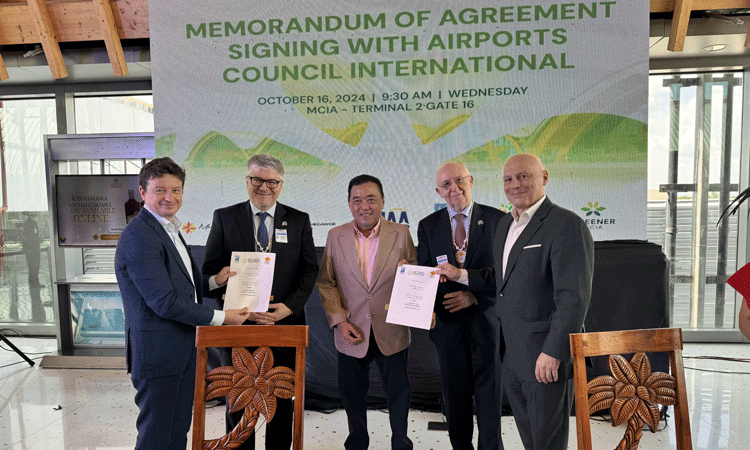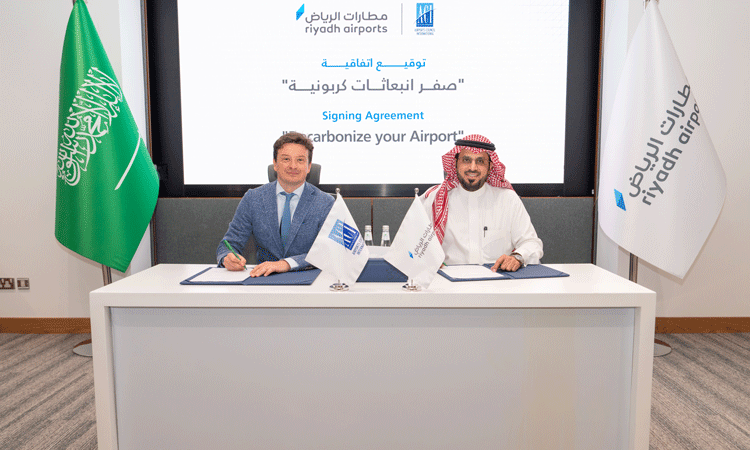Charting a sustainable future for airports in the Asia-Pacific and Middle East region
Posted: 7 July 2025 | Stefano Baronci | No comments yet
Stefano Baronci, Director General, ACI Asia-Pacific & Middle East, outlines how the region’s airports are transforming into hubs of sustainability – pioneering net zero commitments, embracing carbon accreditation, building climate resilience and driving measurable environmental progress.


c: ACI Asia-Pacific & Middle East
Aviation has long been a driving force behind socio-economic development; connecting people, powering trade, and bridging cultures across continents. The global aviation industry supports over 86.5 million jobs and contributes an impressive US$ 4.1 trillion in economic activity, accounting for 3.9% of the world’s GDP. However, alongside this remarkable expansion and global reach comes an increasingly urgent challenge: the growing climate impact of aviation.
As aviation soars toward an unprecedented future, our projections reveal a staggering shift: by 2053, airports across Asia-Pacific and the Middle East will welcome nearly 11 billion passengers – a near tripling from 3.9 billion in 2024. This isn’t just a story of growth; it’s a story of transformation. Airports are no longer transit points, they are emerging as champions of climate action – becoming gateways to a greener, more sustainable future.
Pioneering the path to net zero
By 2053, airports across Asia-Pacific and the Middle East will welcome nearly 11 billion passengers – a near tripling from 3.9 billion in 2024.
Airports across Asia-Pacific and the Middle East became the first segment of the aviation industry to collectively commit to achieving net zero carbon emissions by 2050. Consequently, our airport members from Asia-Pacific and Middle East adopted a resolution in 2022, in Singapore, pledging support to 2050 net zero goals.
Free webinar – The future of asset management in global aviation
15 January, 2026, 02:00PM GMT
Join this virtual panel to hear from some of the AtkinsRéalis and aviation sector experts as we discuss how asset management is changing and the impact it will have on the future operations of airports throughout the world.
This bold leadership came even before ICAO Member States formalised the same target through the adoption of the ‘long-term aspirational goal’ (LTAG). The commitment sparked a powerful shift: the number of airports in our region targeting net zero by 2050 has now reached more than 30.
This is not just about setting targets. It represents a region-wide movement where airports are embedding sustainability into their operational DNA.


c: ACI Asia-Pacific & Middle East
Driving action through the Airport Carbon Accreditation
To help airports move from aspiration to action, ACI Asia-Pacific & Middle East has intensified support for the Airport Carbon Accreditation (ACA) programme. Recognised globally and independently verified, ACA provides a comprehensive and progressive framework for airports to manage and reduce their carbon emissions. The programme is designed to be inclusive and adaptable, accommodating airports at various stages of their climate journey, whether they are just beginning to map their emissions or are working towards full carbon neutrality and net zero transition planning.
The results speak volumes. Today, 645 airports around the world are ACA-accredited, and our region is contributing a growing share. In the latest ACA reporting cycle for 2023–2024, airports in Asia-Pacific and the Middle East collectively reduced over 529,000 tonnes of CO2 equivalent. That’s a reduction comparable to the annual energy use of more than 100,000 households. Currently, 115 airports in our region are actively participating in the programme, and together they handle nearly 33% of total regional passenger traffic. These numbers make it clear: airports are no longer waiting for change – they are driving it.
A practical pathway: the net zero roadmap
Beyond certification, ACI Asia-Pacific & Middle East is also driving tailored strategic support to help airports chart their own course to net zero carbon emissions. The ‘net zero roadmap programme’ has been developed as a hands-on planning tool to help airports design robust decarbonisation strategies. It enables airports to map their emissions sources, set science-based reduction targets, and plan co-ordinated actions across infrastructure, operations and energy systems. Importantly, it supports airports in evaluating capital expenditure needs, developing governance structures, and identifying viable financing options.


c: ACI Asia-Pacific & Middle East
This initiative has already been launched at Cebu Airport in the Philippines and King Khalid International Airport (KKIA) in Saudi Arabia. KKIA became the first airport to undergo a comprehensive on-site gap assessment, which provided a detailed understanding of its current emissions profile and laid the groundwork for a long-term net zero strategy. Through this programme, we are helping airports (regardless of their size or resources) build confidence and capacity for the complex path toward net zero carbon emissions.
Climate resilience
Climate action is not only about mitigation – it also means preparing for future disruptions. With extreme weather events becoming more frequent and more severe, adaptation is no longer optional. Recognising this, ACI Asia-Pacific & Middle East has partnered with AECOM, a global infrastructure leader and trusted professional services firm known for its expertise across water, environment, energy, transportation and buildings, to develop a study on climate resilience. This study is aimed at strengthening the adaptive capacity of airports across our region.
Over the next 12 months, this initiative will provide member airports with technical support, tools for climate risk assessment, and tailored guidance to identify vulnerabilities and develop strategic adaptation plans. These plans will be grounded in regional data and shaped by international best practices, giving airports the insight they need to safeguard operations, passengers and assets in an increasingly unpredictable climate environment.
Green airports recognition
At ACI Asia-Pacific & Middle East, we launched the ‘green airports recognition programme’ nine years ago with a clear vision to inspire and accelerate environmental leadership across the airport community. Over nearly a decade, the programme has made a meaningful impact. It has not only recognised outstanding sustainability initiatives, but also fostered a spirit of collaboration and continuous improvement among our members. We have seen year-on-year growth in participation, with airports of all sizes, from global hubs to regional gateways, embracing environmental best practices. This momentum is driving a deeper environmental consciousness across the sector and encouraging innovative solutions to complex sustainability challenges.
Advocacy in action
As the voice of airports, ACI Asia-Pacific & Middle East is committed to advancing climate-policies and operational practices that prepare our industry for a low-carbon future.
Through technical programmes, collaborations and advocacy platforms, we are driving measurable progress toward net zero carbon emissions. Sustainability is no longer aspirational – it is a shared responsibility, and we are helping airports translate ambition into impact.
At the upcoming ICAO DGCA Conference in Sendai, Japan in July 2025, ACI Asia-Pacific & Middle East will present a discussion paper on climate resilience and adaptation, calling on states to actively support their airports in engaging with our regional study on climate adaptation approaches. The paper will encourage the adoption of practical tools, such as the climate maturity check tool and the climate risk assessment tool, to enhance preparedness and long-term resilience across the airport ecosystem.
Additionally, we will submit an information paper highlighting three cornerstone initiatives that guide airports along their sustainability journey: the airport carbon accreditation (ACA) programme, the net zero roadmap pilot, and the green airports recognition. These initiatives provide a structured path toward carbon reduction, operational efficiency and environmental leadership.
By aligning advocacy with implementation, and ambition with accountability, we are shaping a new narrative for aviation in our regions – one that is resilient, responsible and future-ready.


c: ACI Asia-Pacific & Middle East
Stefano Baronci is the Director General of Airports Council International (ACI) Asia Pacific & Middle East, a trade association representing the interests of airports in Asia Pacific and the Middle East.
Appointed in December 2019, Stefano is responsible for driving and executing the strategic plan of the association and overseeing a team of professionals at the regional office based in Hong Kong. He has over 20 years of analytic and representational experience at national and international levels in the aviation sector, representing both airport and airline industries. He is very familiar with the ACI community, having previously served as the Director of Economics at ACI World in Montreal and Senior Policy Manager at ACI Europe in Brussels. Stefano has also served as Secretary General of Assaeroporti, the Italian airport operators association, and Assistant Director and ATM Infrastructure Expert at the International Air Transport Association (IATA). A native of Italy, he holds an Executive MBA from Warwick University in the UK and graduated with a Law degree from La Sapienza University in Rome, Italy.
WATCH NOW ON DEMAND: Enabling checkpoint flexibility with responsible open architecture
Join us for an essential virtual panel supported by Smiths Detection. We will explore how airports can overcome the challenge of mixed vendor systems by adopting a flexible, open approach to checkpoint technology.
This session offers a focused look into achieving efficiency, agility, and future-readiness.
Key learning points
- Understand what to ask during procurement to ensure long-term flexibility and avoid vendor lock-in.
- Learn how centralised image review and flexible algorithm use can help you get more from the technology you already own.
- Strategies to make mixed vendor screening systems work together to improve checkpoint performance and reduce costs.
- See examples of collaborative deployments and the operational agility they enabled.
Register now for expert insights from Los Angeles World Airports, Dutch Ministry of Justice and Security, and Smiths Detection!
Related topics
Emissions, Passenger volumes, Sustainability, Sustainable development


















